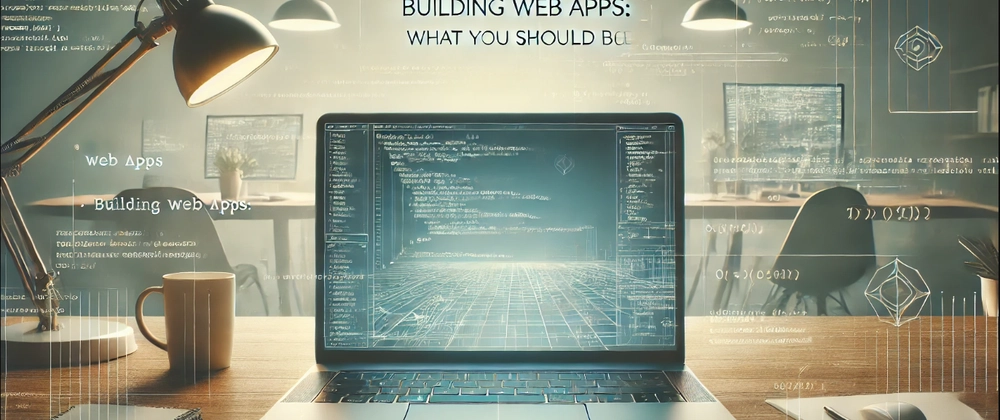Before I started my web development journey, websites just felt like simple, static pages—buttons to click, forms to fill, content to consume. But the moment I built my first full-stack web app, something clicked. Suddenly, I couldn’t unsee the complexity behind every site I visited.
Now, my brain automatically starts dissecting things:
✅ What’s the frontend stack? React, Vue, or vanilla JavaScript?
✅ How is the backend structured? Node.js, Django, Flask?
✅ What’s going on behind the scenes? API calls, caching, database queries?
✅ How does this site handle performance, security, and scalability?
Honestly, once you build something yourself, you never see the web the same way again.
But here’s the real kicker—coding is only one piece of the puzzle. The biggest lessons come from actually trying to build, debug, deploy, and optimize a real-world app. Here are a few things that completely shifted my perspective on development:
1️⃣ Frontend is More Than Just “Making Things Pretty”
I used to think frontend development was just about writing some HTML and CSS. Easy, right?
Then I had to build an actual app. That’s when I met:
⚡ State management headaches – React’s useState and useEffect seem simple... until you’re lifting state up or dealing with async updates.
🛠️ Reusable component architecture – Writing components isn’t just about making them work, but making them scalable and maintainable.
🚀 Performance optimization – Lazy loading, memoization, minimizing re-renders—it’s a never-ending battle.
🎨 CSS struggles – Even with Tailwind or styled-components, structuring styles properly is an underrated skill.
By the time I finished my first project, I had a whole new level of respect for frontend developers.
2️⃣ Backend Development = Real Problem-Solving
If the frontend is about how things look, the backend is where things actually happen. But it’s more than just writing API routes—it’s about making the whole system efficient and secure.
🔥 Database structure matters – Choosing between PostgreSQL and MongoDB isn’t just a preference; it changes how you store and retrieve data.
🔐 Authentication & security are non-negotiable – JWT, OAuth, password hashing—it’s a must, not an afterthought.
📊 Handling business logic properly – A poorly written backend can slow your app down before you even hit 1,000 users.
⚙️ Background tasks – Some things shouldn’t run in real time. Learning about Celery, Redis, and worker queues was a game-changer.
Writing backend code isn’t the hard part—designing a scalable system is.
3️⃣ Deployment is a Whole Other Skill Set
Before I deployed my first app, I thought it was just git push and done. I was very, very wrong.
🖥️ Local ≠ Production – What works on localhost won’t necessarily work on a live server.
🐳 Docker & containerization – Helps avoid the classic “works on my machine” problem.
☁️ Cloud hosting isn’t just pick-and-go – AWS, Heroku, Vercel, DigitalOcean—each has trade-offs.
🔄 CI/CD & automation – Testing, linting, deployment—managing GitHub Actions or Jenkins is a skill in itself.
Once I deployed my first app, I realized DevOps is just as important as development.
4️⃣ Debugging is Where You Learn the Most
Tutorials are great, but nothing prepares you for the real debugging experience:
🚨 That one bug that only happens in production but works fine locally.
❌ API calls failing with no helpful error messages.
🛑 Database migrations breaking your app at the worst possible time.
Some hard-earned debugging lessons:
✅ Always check network requests in dev tools.
✅ Logging beats console.log every time.
✅ Error messages usually tell you exactly what’s wrong—if you actually read them.
If you feel like you spend more time fixing bugs than writing code, congrats—you’re doing real-world development.
5️⃣ The More You Learn, The More You Realize You Don’t Know
At one point, I thought I had a solid grasp of web development. Then I discovered:
⚡ WebSockets for real-time communication.
🔗 GraphQL as an alternative to REST.
🛠️ Kubernetes and containerized deployments.
⚖️ Load balancing & caching to scale applications.
No matter how much you learn, there’s always something new around the corner—and that’s what makes web development so exciting.
So, Will You Ever See the Web the Same Again?
After building my first full-stack app, I couldn’t look at websites the same way anymore. Now, I notice the invisible work behind the UI—API calls, caching strategies, database queries, performance optimizations.
More importantly, I’ve realized that coding is just a fraction of the job. The real challenge? Thinking like a developer, designing scalable systems, and constantly learning.
If you’ve built a web app before, I’d love to know—what was your biggest "aha" moment? Let’s talk in the comments! 👇



Top comments (2)
Right! Once you dive into full-stack development, you start seeing websites in a whole new way. Debugging, optimizing, and deploying teach lessons that tutorials never can. Great insights!
Thank you.